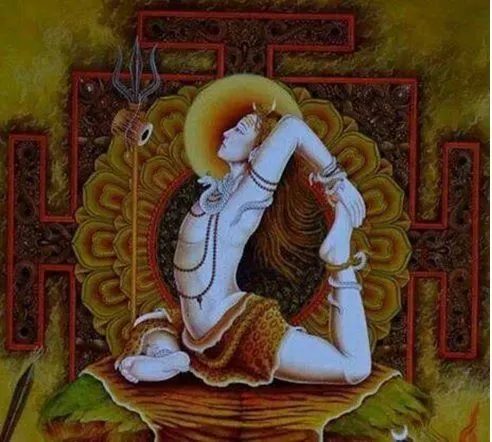Yoga in the classical sense of Yoga Sutras, Bhagavad Gita, Upanishads and Yoga Shastras is meditation leading to Samadhi and Self-realization. In this article we will explore and explain these profound teachings and practices. This article reflects my fifty years of study of Yogic texts in the original Sanskrit and my association with the great Yoga and Veda gurus of India.
By Dr David Frawley
What is True Meditation?
Meditation (Dhyana) is the natural state of our inmost Consciousness, our root Self-awareness, the ground of our Being. If you turn your awareness within, meditation reveals what you really are, your true nature beyond all death and sorrow. It is a return to your spiritual home in the universal Divine, the Infinite and Eternal.
Meditation Beyond the Disturbances of the Mind
True meditation is not an activity of the mind and its habitual thought processes. The mind is not itself conscious or Self-aware, but programed and conditioned according to its karmic connections with the outer world. The nature of the mind is distracted, stimulated and moved from the outside, a stream of changing or even erratic thoughts, emotions and sensations, not calm and meditative but cauught in our memories and Samskaras.
The real meditative state is an awareness beyond the thought-based mind, including most of what we call intellect and intelligence. Learning to access your deeper thought free awareness is the intelligence of Yoga, which can unfold all the mysteries of the universe to us.
State of the Witness – Sakshi Bhava
Yogic meditation is first of all the state of the witness, sakshi-bhava: a state of detachment (vairagya) in which you hold to the steadiness of observation and do not simply react to what you see. Learn to be the silent witness of what you see, not controlled by it. Whatever you witness with a calm mind will reveal its inner truth to you.
One-pointed Mind – Ekagra Chitta
Yogic meditation is based upon a one-pointed awareness, ekagra-chitta, in which our thoughts are systematically merged into a deeper unitary awareness and focus on the Divine Self within. In this unitary state our Inner Seeing and Inner Listening (Drishti and Shruti) awaken, unfolding a new meditative way of learning. Learn to open these inner yogic faculties within you.
One-pointed Prana – Ekagra Prana
Yet to make the mind one-pointed, we must first make our Prana one-pointed, as pranic disturbances through our senses and vital urges fragment our energy and awareness. We need to balance the five pranas within us as a unitary life movement to transcendence.
One-pointed Intention, Samkalpa or will power
For true meditation we also need the right intention, motivation and determination. There must be a continual aspiration to the Divine. Learn to bring a meditative intention into all that you do, with a meditative vision to understand the sacred in all, from all of nature to all of humanity.
Meditation and Self-inquiry
Yogic Meditation is an inquiry to our true Self, the ultimate question, “Who Am I”? This is not a looking for any outer identity at a social, physical or mental level. It is moving into to our true nature as pure consciousness beyond body and mind, the Purusha/Atman of Yoga, which is Infinite and Eternal.
Surrender to the Spiritual Heart
Meditation is not an assertive activity to achieve or become something. It is surrendering within, merging the mind into the spiritual heart (hridya) which is the seat of the Self and our connection to the Divine with. Learn to surrender to that inner light and gain the entire universe as your play of consciousness.
Meditation and All the Limbs of Yoga
Yet remember that all the limbs and practices of Yoga are part of a journey into meditation.
Yamas and Niyamas are the principles of meditative living, values and behavior.
Asanas are putting the body into a meditative pose.
Pranayama is a meditative deepening of the breath and the vital energy.
Pratyahara is turning the senses within to merge into the light of consciousness.
Dharana is developing the yogic power or attention.
Dhyana is Yogic meditation unfolding.
Samadhi is the unitary consciousness of Yoga and the peace and bliss that it brings.
Nirvikalpa Samadhi is the state of pure Self-awareness and Self-realization.
Developing Yogic Meditation is the highest form of meditation which takes us beyond all death and sorrow to unity with all.
Om Namah Shivaya!
This article first appeared in www.vedanet.com and it belongs to them.








